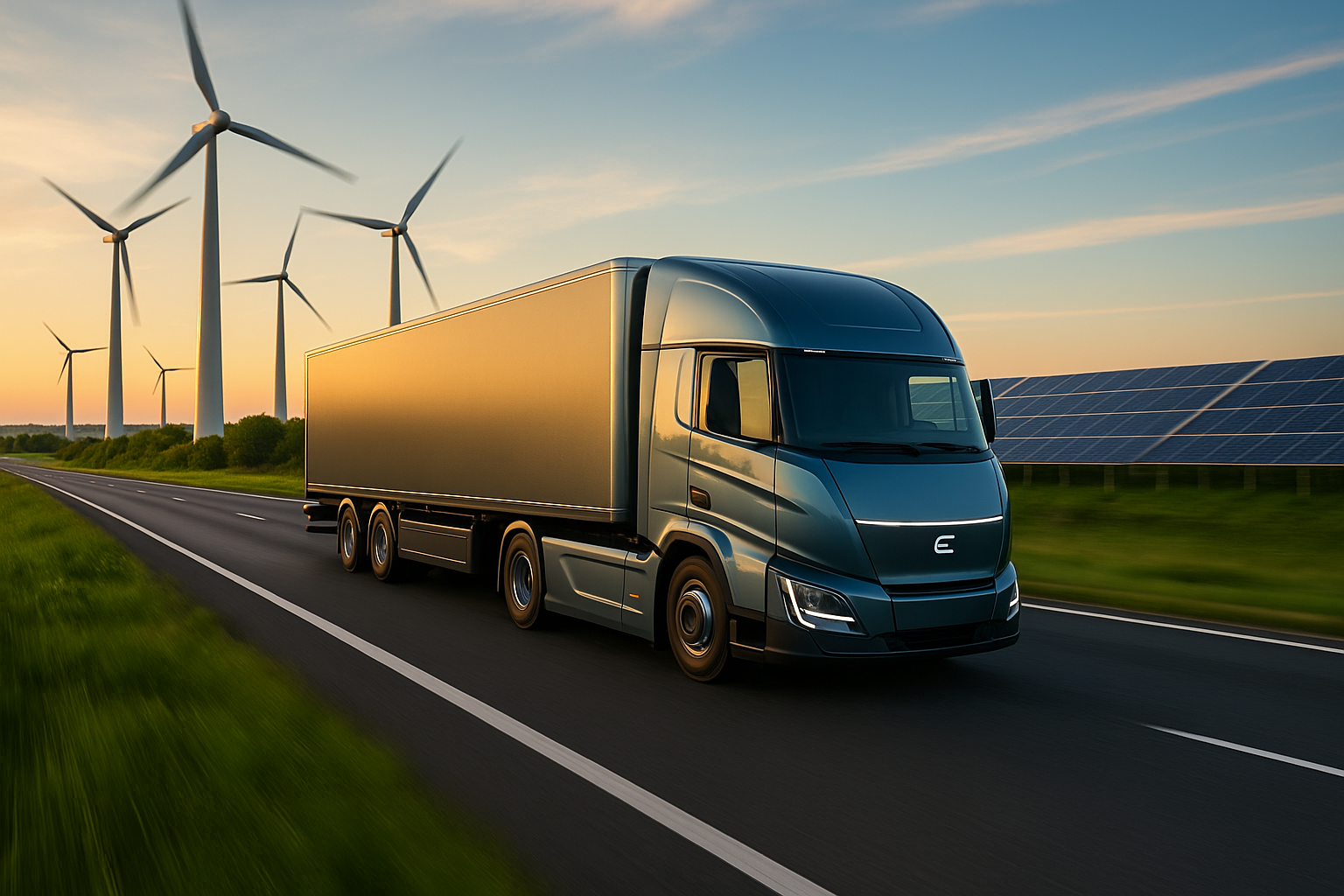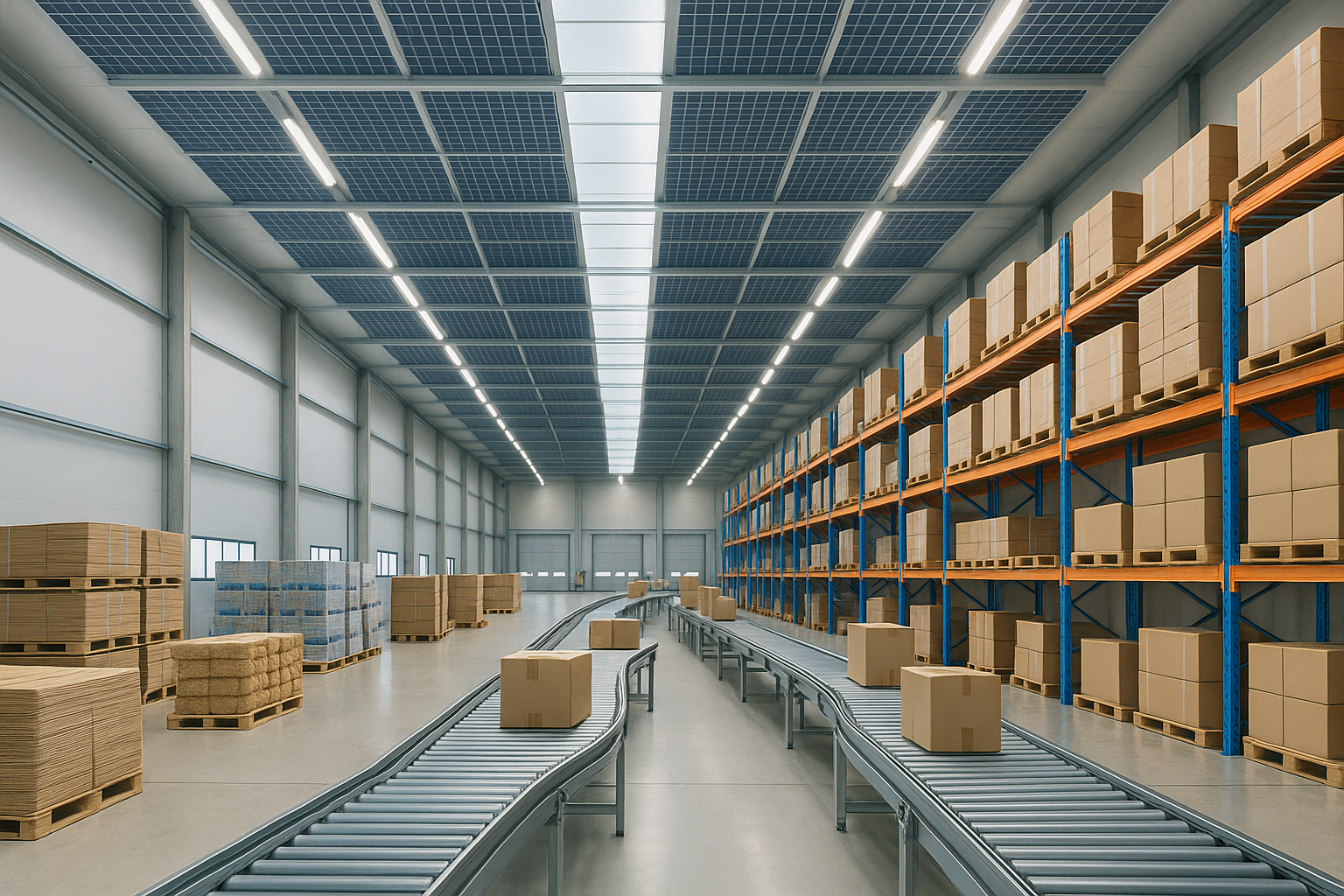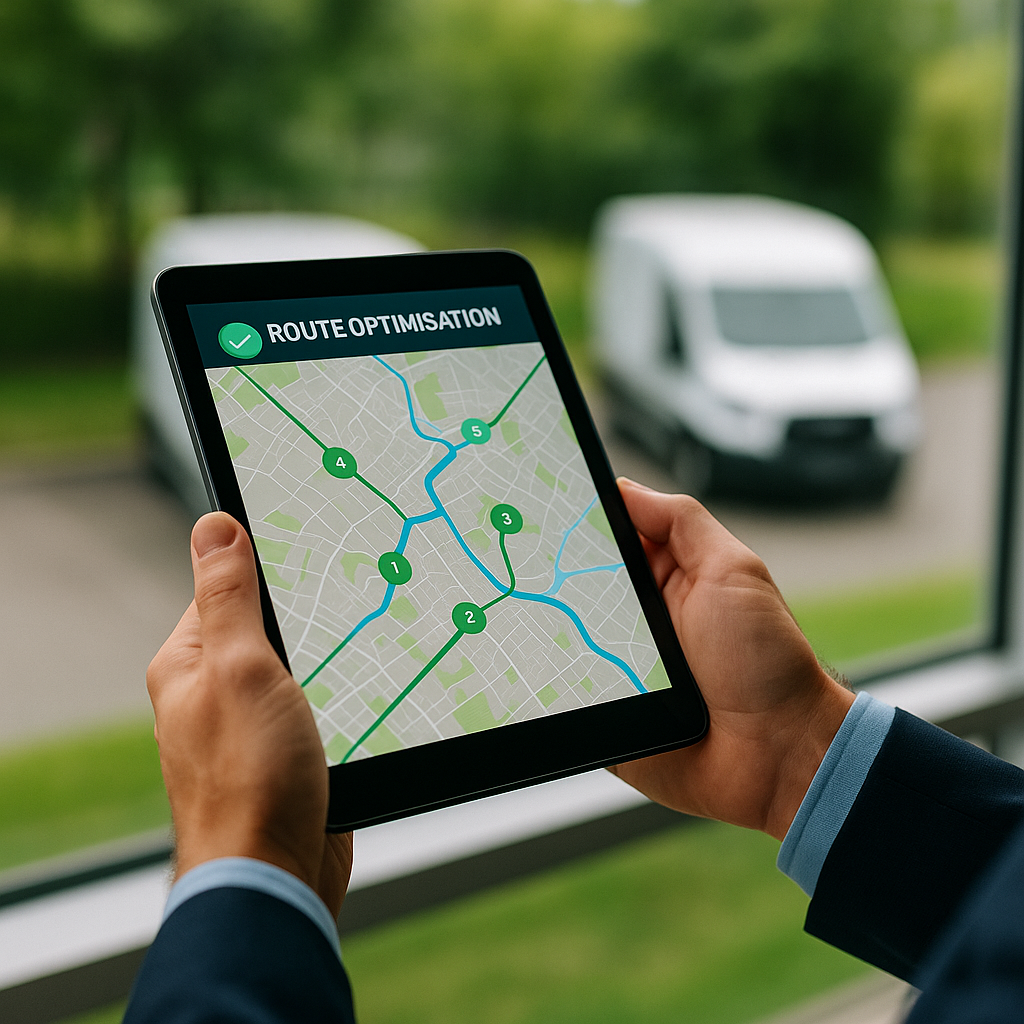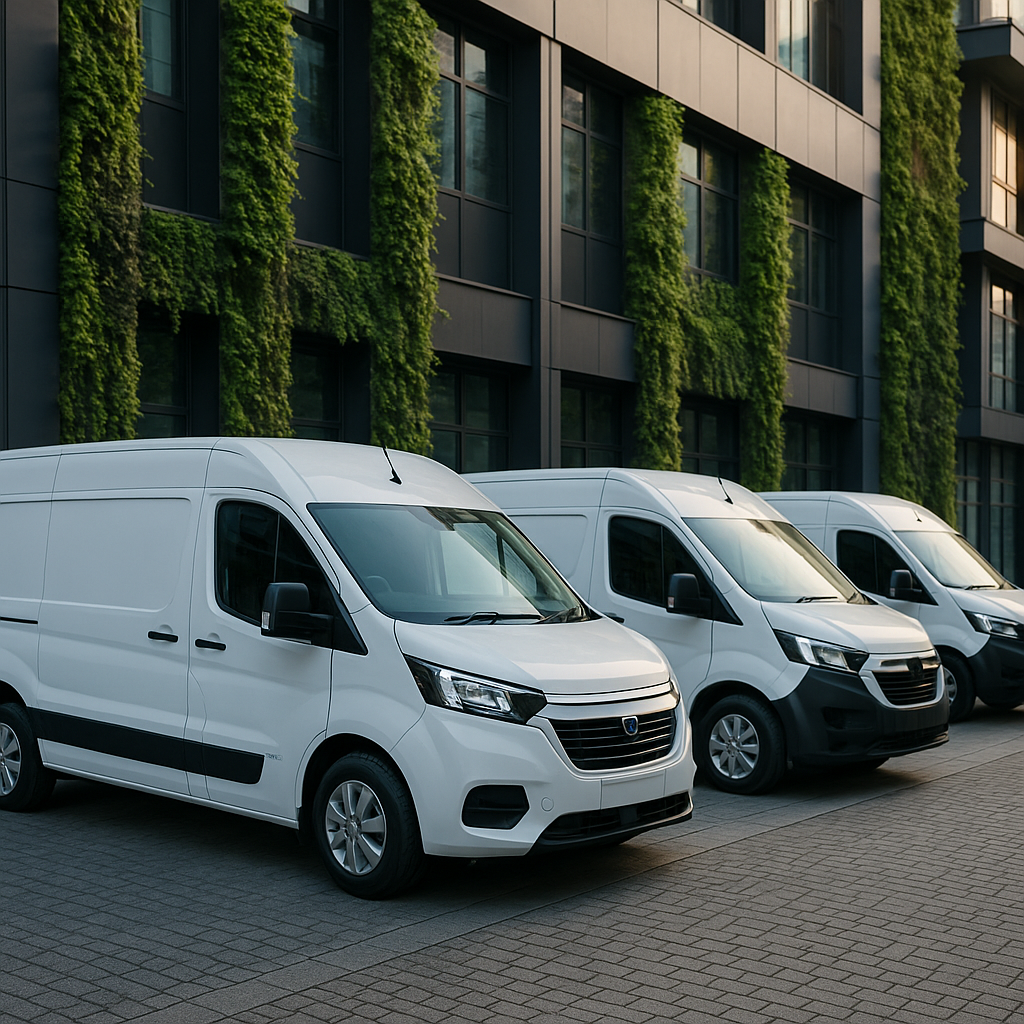In logistics and supply chains, businesses increasingly turn toward green logistics to achieve economic and environmental goals.
With rising environmental concerns and regulatory pressures, focusing on eco-friendly logistics practices has never been more critical.
This article explains green logistics principles, benefits, and strategies, offering actionable insights for companies aiming to embrace sustainable practices and build a more sustainable future.

Let's Get Straight to the Point
Green logistics focuses on integrating sustainable practices into supply chains to reduce environmental impact while boosting efficiency and profitability.
Addressing high fuel consumption and waste challenges can help businesses adopt eco-friendly innovations like electric vehicles, alternative fuels, and sustainable packaging.
Key strategies include optimising routes, reducing energy use, and leveraging renewable energy sources.
Companies implementing green logistics solutions achieve cost savings and regulatory compliance, foster customer loyalty, and contribute to a more sustainable future.
What is Green Logistics?
Green logistics refers to integrating sustainable and eco-friendly practices into the supply chain. It focuses on reducing the environmental impact of logistics operations while ensuring efficiency and cost-effectiveness.
The objective is to minimise carbon emissions and address other key areas such as energy consumption, waste management, and sustainable packaging.
Sustainable logistics practices involve reducing the carbon footprint of transportation and warehousing activities.
Adopting green logistics principles includes optimising delivery routes, embracing alternative fuels, and improving energy efficiency in operations.
This approach is essential for businesses aiming to remain competitive while aligning with global efforts for environmental preservation.
Environmental Impact of Traditional Logistics
Traditional logistics practices have long been associated with significant environmental concerns.
The reliance on fossil fuels for transportation and energy-intensive warehouse operations contributes heavily to air pollution and the degradation of the environment.
High fuel consumption:
Logistics operations rely on diesel and gasoline, leading to massive amounts of greenhouse gas emissions.
This overdependence exacerbates climate change and depletes non-renewable resources.
Inefficient delivery systems:
Failure to optimise routes results in wasted fuel and increased emissions.
Poor inventory management leads to unnecessary transportation and waste.
Improper waste disposal:
Inadequate recycling measures and excess packaging materials harm ecosystems.
Addressing these inefficiencies is critical for transitioning to a greener future and mitigating the environmental impact of logistics.
Benefits of Sustainable Logistics
Implementing sustainable logistics practices offers significant advantages for businesses, communities, and the planet. Key benefits include:
Reduced carbon emissions:
Companies can minimise their contribution to greenhouse gas emissions by adopting eco-friendly practices.
Cost savings:
Optimising energy usage and reducing fuel consumption lowers operating costs in the long run.
Enhanced brand reputation:
Consumers increasingly prefer environmentally responsible organisations. Aligning with environmental stewardship fosters customer loyalty and enhances market position.
Regulatory compliance:
Meeting environmental regulations helps avoid fines and ensures smooth operations.
Innovation opportunities:
Embracing sustainable practices drives the development of innovative solutions, such as using alternative fuels or electric vehicles.
These benefits demonstrate that green logistics protects the environment and supports long-term profitability and growth.

Environmental Challenges in Logistics Operations
Logistics operations face numerous environmental challenges that impact the sustainability of the supply chain. One of the primary concerns is the high carbon footprint associated with transportation, which accounts for a significant portion of greenhouse gas emissions.
Reliance on fossil fuels for transportation contributes to climate change, air pollution, and negative impacts on public health. Logistics operations also generate substantial waste, including packaging materials, pallets, and other non-biodegradable items.
Another environmental challenge in logistics operations is the inefficient use of resources, such as energy and water. Warehouses and distribution centres consume large amounts of energy for lighting, heating, and cooling, increasing energy costs and carbon emissions.
Furthermore, the extraction, processing, and transportation of raw materials for packaging and other logistics-related activities can result in water pollution and depletion of natural resources.
The environmental impact of logistics operations is not limited to the transportation and warehousing phases. The production and disposal of packaging materials and the handling and storing of hazardous materials also pose significant environmental risks.
The lack of transparency and accountability in logistics operations can make tracking and measuring environmental performance difficult, hindering efforts to adopt sustainable practices.
Strategies for Achieving Green Logistics
To effectively implement green logistics, businesses must adopt specific strategies tailored to their operations. Below are some actionable steps:
Optimising transportation routes:
Leverage technology to identify the most efficient delivery routes, minimising travel distances and fuel usage.
Tools like GPS and AI-driven software are invaluable in achieving these goals.
Adopting alternative fuels:
Transitioning to electric and hybrid vehicles and using compressed natural gas reduces reliance on traditional fuels.
These vehicles produce fewer emissions and are more energy-efficient.
Reducing energy consumption:
Implement energy-efficient practices, such as solar panels, warehouse energy management systems, and renewable energy sources, across logistics operations.
Green packaging solutions:
Invest in eco-friendly packaging materials that are biodegradable and recyclable.
Reduce excessive packaging to minimise waste.
By prioritising these green logistics strategies, businesses can align operations with sustainability goals while improving efficiency.
Sustainable Practices in Logistics Operations

Integrating sustainable practices into logistics operations is vital for achieving a sustainable supply chain. Here are some key practices:
Eco-friendly packaging solutions:
Replace conventional plastic with biodegradable materials.
Use innovative designs to reduce packaging waste.
Energy-efficient warehouses:
Equip facilities with LED lighting, smart HVAC systems, and solar panels to reduce energy use.
Incorporate energy-saving automation technologies for better inventory management.
Recycling materials:
Promote reverse logistics to encourage returning and recycling used products and materials.
These initiatives lower the environmental impact and pave the way for more sustainable operations.
Innovations in Eco-Friendly Transportation
The transportation industry has seen significant advancements aimed at promoting green logistics practices. These include:
Electric and hybrid vehicles:
The adoption of electric delivery vehicles is growing due to their low emissions and reduced fuel consumption.
Hybrid models combine the benefits of conventional and electric engines, offering enhanced efficiency.
Alternative fuels:
Compressed natural gas and biofuels are becoming more common in freight transport.
Autonomous vehicles:
These vehicles promise increased efficiency by optimising energy usage and reducing unnecessary stops.
Efficient delivery routes:
Route optimisation software ensures the shortest, most fuel-efficient paths are used, reducing emissions.
By embracing these innovations, companies can significantly reduce their carbon footprint and achieve environmental sustainability.
Overcoming Challenges in Green Logistics
While the benefits of green logistics are undeniable, its implementation comes with challenges:
Initial investment costs:
Transitioning to sustainable and green logistics often requires significant financial resources.
For example, acquiring electric vehicles or upgrading to energy-efficient systems may strain budgets initially.
Coordination and collaboration:
Achieving a sustainable supply chain requires seamless stakeholder collaboration across the entire supply chain.
Data collection and analysis:
Accurate metrics are essential for tracking progress and ensuring goals are met.
Long-term planning and a commitment to environmentally responsible practices can help businesses overcome these hurdles and thrive in a competitive market.

Metrics for Measuring Green Logistics Success
Success in green logistics is measurable through specific key performance indicators (KPIs):
Carbon emissions:
Track reductions in emissions over time to evaluate the impact of sustainable practices.
Fuel and energy consumption:
Monitor reductions in fuel consumption and overall energy use.
Waste reduction:
Measure progress in minimising packaging waste and increasing recycling rates.
Cost savings:
Analyse reductions in operating costs through more efficient systems.
Regular reporting on these metrics helps companies stay accountable and make data-driven decisions.
Future of Green Logistics
The future of green logistics lies in adopting innovative technologies and embracing sustainability at every level. Trends that will shape this future include:
Renewable energy sources:
Increasing use of solar panels, wind energy, and other renewable sources in logistics operations.
IoT technologies and artificial intelligence:
Advanced tools for real-time monitoring, route optimisation, and predictive analytics.
Circular economy principles:
Focusing on reuse and recycling to create closed-loop systems that minimise waste.
As businesses prioritise environmental stewardship, green logistics will become a cornerstone of modern supply chains.
Case Studies of Successful Green Logistics Implementation
Real-world examples highlight the transformative potential of green logistics:
UPS:
Through adopting electric vehicles and route optimisation, UPS has significantly reduced carbon emissions.
Freight Systems:
The company has implemented eco-friendly logistics practices, such as load consolidation and fuel-efficient transport options, resulting in environmental and economic benefits.
These case studies demonstrate how businesses can align profitability with their commitment to a more sustainable future.
Implementing Green Logistics Solutions
Implementing green logistics solutions can reduce the environmental impact of logistics operations and promote a more sustainable future.
One effective strategy is to adopt sustainable practices throughout the supply chain, such as using alternative fuels, optimising routes, and reducing packaging waste.
Companies can also invest in eco-friendly technologies, such as electric or hybrid vehicles, and renewable energy sources, such as solar or wind power, to power their warehouses and distribution centres.
Another approach is implementing green logistics strategies that reduce fuel consumption and carbon emissions. This can be achieved through route optimisation, load consolidation, and fuel-efficient vehicles.
Additionally, companies can adopt sustainable packaging solutions, such as biodegradable or recyclable materials, to reduce waste and minimise environmental harm.
Collaboration and partnerships are also essential for implementing green logistics solutions. Companies can work with suppliers, carriers, and other stakeholders to develop and implement sustainable logistics practices.
This can include sharing resources, expertise, and best practices to reduce environmental impact and improve supply chain efficiency.
Furthermore, companies can leverage technology and data analytics to optimise logistics operations and reduce environmental impact.
This can include using supply chain control towers to track and measure environmental performance and implementing AI-powered route optimisation and load planning tools to reduce fuel consumption and lower emissions.
By adopting sustainable logistics practices and implementing green logistics solutions, companies can reduce their environmental impact, improve supply chain efficiency, and promote a more sustainable future.

Green Logistics Solutions and Services
The demand for green logistics solutions continues to rise, with companies like Freight Systems offering tailored services, including:
Route optimisation:
Leveraging technology to enhance delivery efficiency and reduce emissions.
Fuel-efficient transport:
Incorporating hybrid vehicles and compressed natural gas fleets.
Regulatory compliance:
Ensuring adherence to environmental regulations to maintain operational legitimacy.
These services enable businesses to meet sustainability goals while achieving significant cost savings.
Conclusion
Green logistics is no longer an option; it is necessary for businesses aiming to achieve a sustainable future.
Companies can reduce their environmental impact while boosting profitability by embracing eco-friendly practices, adopting innovative solutions, and focusing on environmental responsibility.
The path to a greener logistics industry begins with small steps and a long-term commitment to sustainability.
FAQs
1. What is green logistics?
Green logistics involves adopting sustainable practices in supply chains to reduce environmental impact while improving efficiency. It focuses on reducing carbon emissions, energy use, and waste throughout logistics operations.
2. Why is green logistics important?
Green logistics is essential for mitigating climate change, reducing the carbon footprint, and achieving environmental sustainability. It also helps businesses save costs, meet regulatory standards, and enhance their reputation.
3. How can businesses implement green logistics?
Businesses can implement green logistics by optimising delivery routes, adopting electric vehicles or alternative fuels, and using eco-friendly packaging solutions. They can also improve warehouse energy efficiency and reduce waste through recycling.
4. What are the benefits of green logistics?
Green logistics reduces fuel consumption, cuts operating costs, and lowers greenhouse gas emissions. It also enhances customer loyalty and aligns businesses with global sustainability goals.
5. What are some examples of green logistics practices?
Examples include using electric delivery vehicles, optimising transport routes, adopting renewable energy in warehouses, and implementing reverse logistics for recycling materials. These practices promote a more sustainable supply chain.

